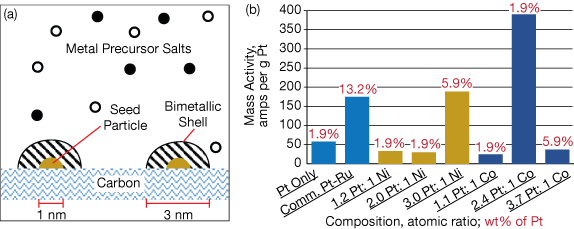Center
Focus Area
Universities
Year Est.
-
Advanced Materials
- Advanced Materials (Primary Area)
2015
-
Advanced Materials
- Advanced Materials (Primary Area)
- Advanced Materials
2011
-
Advanced Materials
- Advanced Materials (Primary Area)
2014
-
Advanced Materials
- Advanced Materials (Primary Area)
- Advanced Electronics
2013
-
Advanced Materials
- Advanced Materials (Primary Area)
2010
2022
-
Advanced Materials
- Advanced Materials (Primary Area)
2015
-
Advanced Materials
- Advanced Materials (Primary Area)
2011
-
Advanced Materials
- Advanced Materials (Primary Area)
2009
-
Advanced Materials
- Advanced Materials (Primary Area)
2014
-
Advanced Materials
- Advanced Materials (Primary Area)
2018
-
Advanced Materials
- Advanced Materials (Primary Area)
- Energy and Environment
2021
-
Advanced Materials
- Advanced Materials (Primary Area)
2010
Catalyzing Commercialization: Novel Palladium-Graphene Catalysts Improve Pharmaceutical Processing
Pharmaceutical companies use a variety of metal catalysts to produce active pharmaceutical ingredients (APIs). One of the most widely used catalytic reactions in commercial operation is the Suzuki cross-coupling reaction, which can produce high-volume drugs such as the anti-hypertension drug losartan. These reactions traditionally employ homogeneous palladium catalysts, which often require extensive purification to separate the catalyst from the product.
Learn MoreCatalyzing Commercialization: Creating Novel Bimetallic Catalysts for Methanol Fuel Cells
Improvements in direct-methanol fuel cells (DMFCs) have been achieved at the Univ. of South Carolina based on a new, easy-to-scale method to synthesize bimetallic catalysts. The two most common types of fuel cells being developed for mobile transportation applications are DMFCs and hydrogen fuel cells. Methanol is safer than hydrogen, and it is easier to handle and install in refueling stations. Whereas a monometallic platinum (Pt) catalyst may be used for H2 fuel cells, a more-expensive bimetallic catalyst — typically consisting of Pt and ruthenium (Ru) — is required for DMFCs.
Learn MoreCatalyzing Commercialization: Cold Sintering Creates New Avenues for Advanced Composites Manufacture
Engineers often want to combine many types of materials into a composite architecture to achieve specific performances in devices, from electronics to biomedical implants. However, material compatibility issues that arise during manufacturing can limit practical realization of these composites.
Learn More

